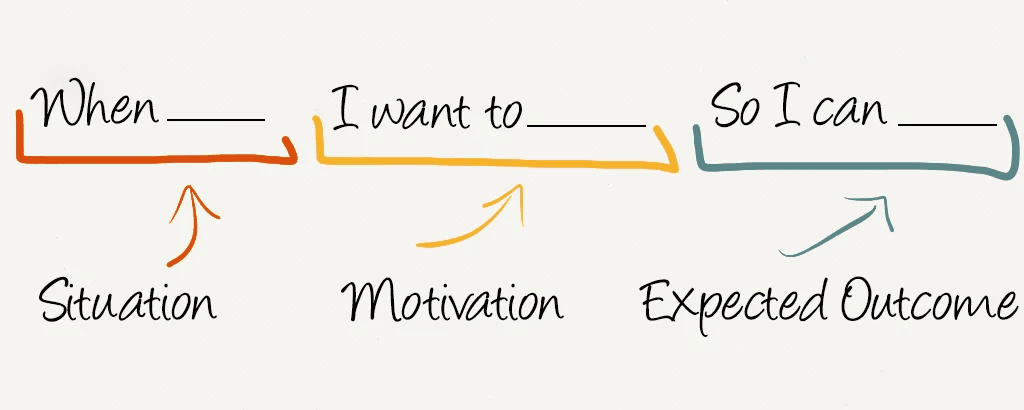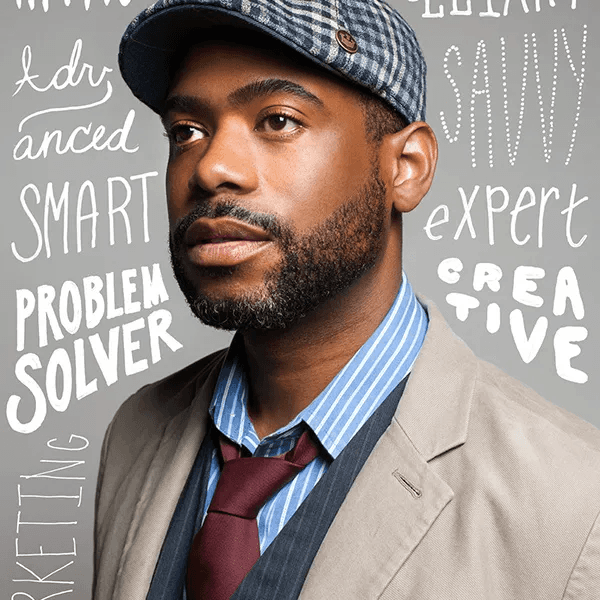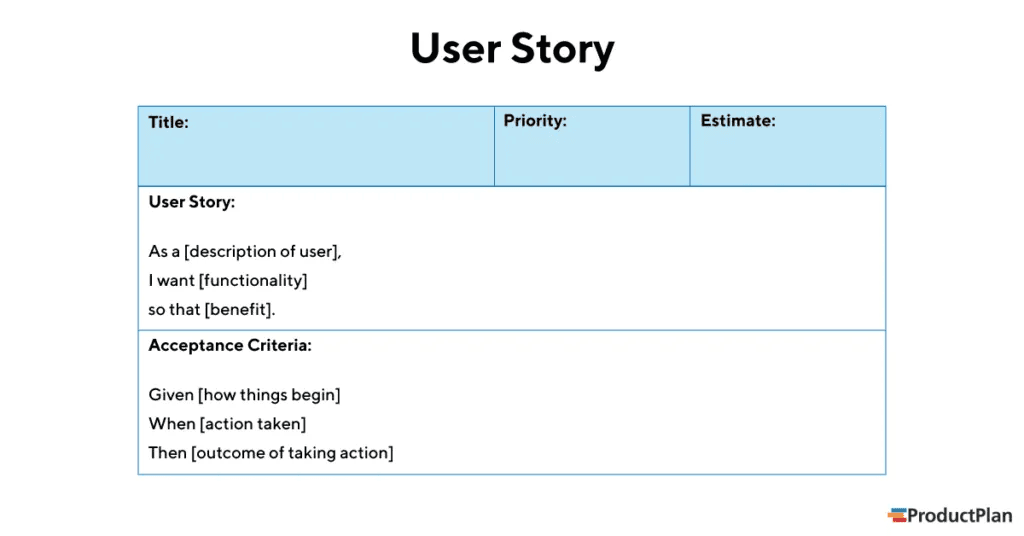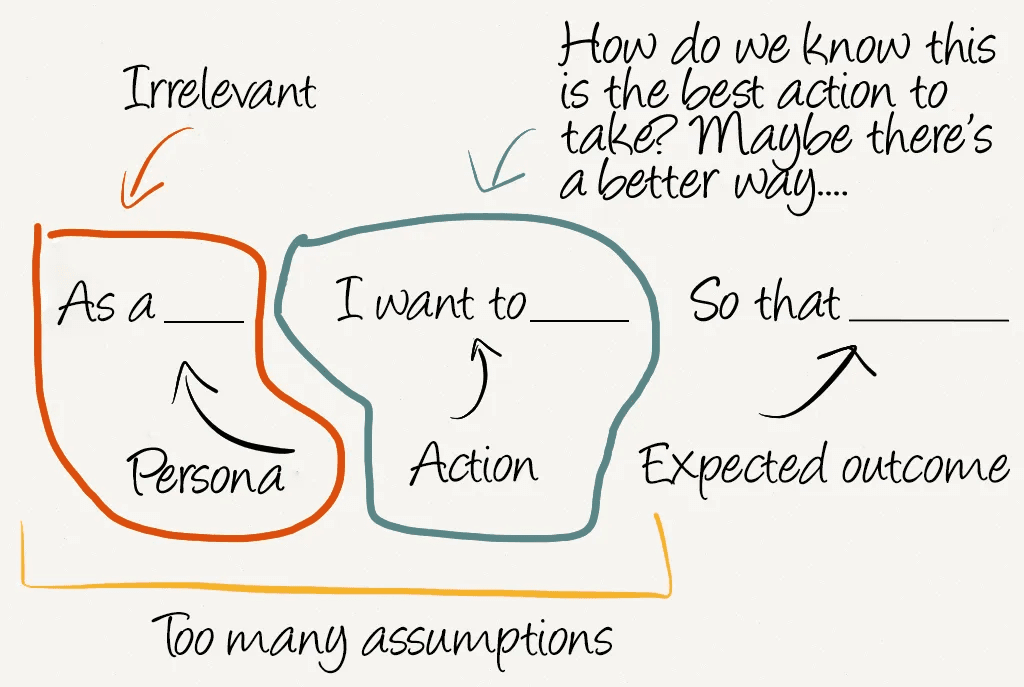Comparing Job Stories, User Stories, and Use Cases:
Which Approach Best Captures User Requirements?
Photo by Nataliya Vaitkevich
Capturing user requirements is crucial for designing successful products, but with various approaches like job stories, user stories, and use cases, it can be challenging to determine the best fit. Job stories focus on the user’s motivation and desired outcome, while user stories describe functionality from the user’s perspective. Use cases provide a more detailed, structured approach to defining system behavior.
In this article, we’ll dive deep into these three techniques, exploring their definitions, strengths, weaknesses, and how they contribute to creating user-centric products.
What are Job Stories?

From JTBD.info article Replacing the User Story with the Job Story)
Job stories are a user-centric approach to defining product requirements that focus on the specific situation, motivation, and desired outcome of a user. They follow a simple format: “When [situation], I want to [motivation], so I can [outcome].” By emphasizing the context and the user’s intent, job stories help product teams build empathy and understanding of user situations. Learn more on jtbd.info.
What are the benefits of Job Stories

Mailchimp persona project on Dribbble
Focus on user motivation and context: Job stories put the user’s needs and motivations at the forefront, ensuring that the product addresses real-world situations.
Emphasize the user’s desired outcome: By clearly stating the user’s desired outcome, job stories help teams prioritize features that deliver the most value.
Help prioritize features based on user needs: Job stories enable teams to make informed decisions about which features to prioritize based on their impact on user outcomes.
Encourage empathy and understanding of user situations: By framing requirements in terms of user situations, job stories foster empathy and a deeper understanding of the user’s perspective.
What are the drawbacks of Job Stories
May not capture all edge cases or technical requirements: Job stories focus on the user’s core needs and may not account for all technical complexities or edge cases.
Can be more challenging to map to technical implementations: As job stories are highly user-centric, translating them into technical requirements may require additional effort.
May not provide a complete picture of the user’s journey: Job stories often focus on specific situations and may not capture the full context of the user’s experience.
What are User Stories?

Image from ProductPlan’s article: User Story
What are the benefits of User Stories
Simple and easy to understand: User stories use simple language and a straightforward structure, making them accessible to all team members, regardless of technical expertise.
Focus on user goals and benefits: By framing features in terms of user goals and benefits, user stories keep the team focused on delivering value to the user.
Help prioritize features based on user value: User stories enable teams to prioritize features based on their importance to the user and the value they deliver.
Encourage collaboration and communication within the team: User stories serve as a focal point for discussions and collaboration, helping teams work together effectively.
What are the cons of User Stories

Image comparing User Stories to Job Stories from JTBD.info: Replacing the User Story with the Job Story.
May not capture complex user interactions or edge cases: User stories often focus on a single goal and may not account for complicated user flows or edge cases.
Can be confusing if not well-defined: Poorly written user stories can be open to interpretation, leading to misunderstandings and inconsistencies.
May not provide a complete picture of the user’s context or motivation: User stories focus on specific goals and may not capture the full context of the user’s situation or underlying motivations.
What are Use Cases?
From Lucidchart: UML Use Case Diagram
Use cases are detailed, step-by-step descriptions of how a user interacts with a system to achieve a specific goal. They include preconditions, postconditions, and alternate flows, providing a comprehensive view of the user’s interaction with the product.
What are the benefits of Use Cases
Provides a comprehensive, step-by-step view of user interactions: Use cases offer a detailed breakdown of user flows, ensuring that all steps and interactions are accounted for.
Captures edge cases, alternate flows, and exceptions: Use cases consider various scenarios, including edge cases and exceptions, providing a thorough understanding of the system’s behavior.
Helps identify technical requirements and system behavior: By detailing user interactions, use cases help teams identify the technical requirements and expected system behavior.
Useful for complex or critical user flows: Use cases are particularly valuable for capturing complex or critical user flows, where a high level of detail is necessary.
What are the drawbacks of Use Cases
Can be time-consuming to create and maintain: Developing comprehensive use cases requires significant time and effort, and keeping them up-to-date can be challenging.
May be too detailed for high-level planning or prioritization: The granular nature of use cases may not be suitable for high-level planning or feature prioritization.
Can become outdated quickly if the system or requirements change frequently: As products evolve, use cases may become outdated, requiring frequent revisions to maintain accuracy.
How to choose the right way to communicate user goals
With an understanding of job stories, user stories, and use cases, the question remains: which approach should you choose? The answer depends on your project’s specific needs, complexity, and the preferences of your team.
Consider the following factors when selecting an approach:
Project complexity: For simpler projects, user stories may suffice, while more complex projects may benefit from the detailed nature of use cases.
Team familiarity: Choose an approach that your team is comfortable with, that doesn’t disrupt flow, and can effectively implement.
User-centricity: If your primary focus is on understanding user motivations and context, job stories may be the most suitable choice.
Level of detail required: Use cases provide the most comprehensive view of user interactions, while user stories and job stories offer a higher-level perspective.
Many teams find success by combining elements of different approaches to create a hybrid method that suits their specific needs. For example, you might use job stories to capture user motivations, user stories to define features, and use cases to detail critical user flows.
Conclusion
Job stories, user stories, and use cases each offer unique benefits in capturing user requirements. By understanding the pros and cons of each approach, you can make an informed decision about which method, or combination of methods, will best serve your project.
Remember, the ultimate goal is to create products that meet user needs and deliver value. By staying focused on the user and continuously refining your approach, you’ll be well on your way to building successful, user-centric products.
